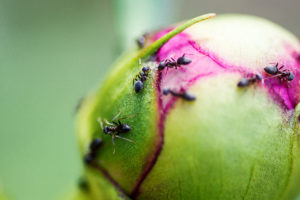One of our favorite sights and scents in the garden is the yearly parade of Peony flowers that happens each June at the farm in Morris, CT. These gorgeous, and often fragrant, plants are very easy to grow. Below you’ll find some basic information about Peonies along with keys to success that will help you grow your best Peonies ever.
What’s the difference between Herbaceous Peonies and Tree Peonies?
Herbaceous Peonies naturally die back to the ground in fall. Tree Peonies, which aren’t “trees” but shrubs, have a woody structure that remains above ground through the plant’s dormant period. The woody trunk and branches should never be pruned to the ground.
How deep should Peonies be planted?
Herbaceous Peonies that are planted too deep will fail to bloom. If you are planting a potted Peony (one that has top growth), set it in a hole so it sits at the same level it’s at in the pot. (In other words, do not sink the plant so deeply that soil must be mounded against the stems.) If you’re planting a bareroot Peony (a bareroot is just what it sounds like: a section of the plant’s rootstock with bare roots and “eyes” or growing buds), dig a shallow hole and arrange the crown so the growing buds or “eyes” are facing upward and are covered by only 1–2″ of soil in the North, barely 1″ in the South. (See diagram below for how to plant a bareroot Herbaceous Peony.)

When should I stake my Peonies?
Double-flowered Peonies (which have layers of petals so the blossoms tend to be fuller and heavier than Singles) generally need staking. Set the stakes and string in place when plants are a few inches tall, so they’ll grow into and hide the framework.
Are ants bad for my Peonies?
As Peonies produce flower buds, you may see ants crawling on the unopened buds. The ants do no harm. They simply like a sticky substance that covers the buds.
What if I see black leaves on my Peony plant?
In a wet season, botrytis, a type of fungal disease, may blacken the flower buds
and cause stems or leaves to wilt. Promptly remove and dispose of any infected plant parts. Clean up all foliage in the fall and place in the trash, not the compost. (Ridding your property of any diseased foliage will help prevent the disease from wintering over and returning the following year.)
What can I plant with my Peonies?
Peonies are exceptionally long-lived, and even after bloom, they provide a mound of handsome foliage that adds structure and presence to borders and beds. Allowing for good air circulation, plant Peonies with Baptisia, Nepeta, Clematis, Roses, and Siberian Irises for a glorious June show.
To learn more about growing Peonies visiting our Growing Guide.



